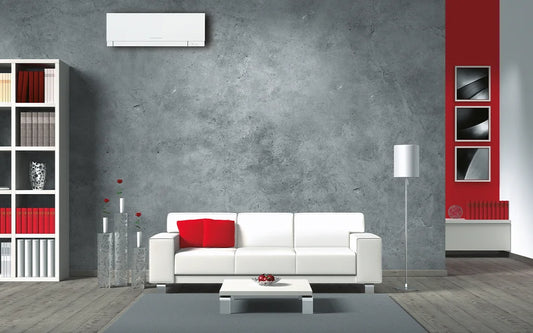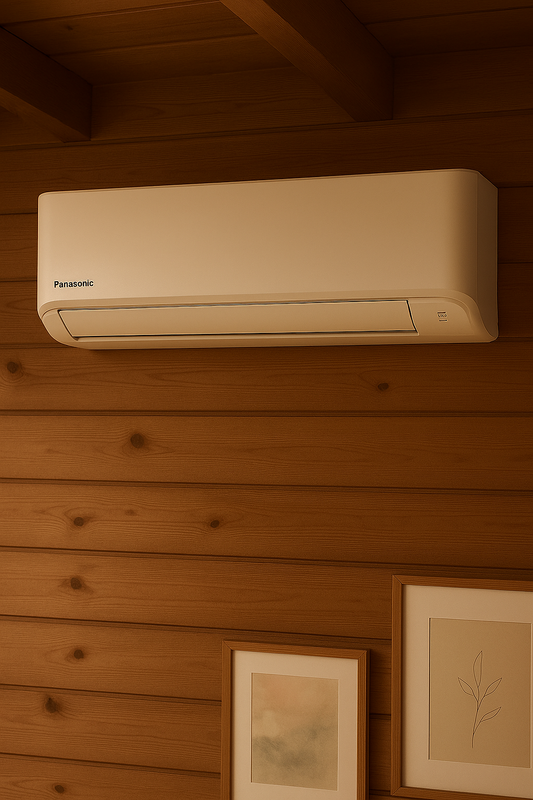Installera Luftvärmepump - En Guide
Inledning
Att installera en luftvärmepump är ett effektivt sätt att både kyla och värma upp ditt hem. Denna teknik har blivit alltmer populär på senare år på grund av dess energieffektivitet och miljövänliga egenskaper. I denna guide kommer vi att gå igenom processen för att installera en luftvärmepump samt dess fördelar och användningsområden.
Definition och Bakgrund
En luftvärmepump är en apparat som använder utomhusluftens värmeenergi för att värma upp eller kyla ner ett inomhusutrymme. Genom att utnyttja en kompressor och köldmedium kan luftvärmepumpen överföra värmeenergi till eller från utomhusluften till det inre av huset. Denna teknik är särskilt effektiv i områden med milda vintrar och varma somrar.
Fördelar och Användningsområden
En av de främsta fördelarna med att installera en luftvärmepump är dess energieffektivitet. Genom att utnyttja befintlig utomhusluft för att värma upp eller kyla ner ett utrymme, kan luftvärmepumpen bidra till betydande energibesparingar. Dessutom kan luftvärmepumpar vara en miljövänligare alternativ till traditionella uppvärmnings- och kylsystem genom att minska användningen av fossila bränslen.
Luftvärmepumpar kan användas i både bostäder och kommersiella fastigheter. Dessa system är särskilt lämpliga för små till medelstora utrymmen och kan vara en effektiv lösning för att skapa en behaglig inomhusmiljö året runt.
Relaterade Tekniker, Begrepp eller Variationer
Det finns flera olika typer av luftvärmepumpar, inklusive luft-luftvärmepumpar, luft-vattenvärmepumpar och luft-avluftvärmepumpar. Varje typ har sina egna fördelar och användningsområden, och valet av luftvärmepump bör baseras på specifika behov och förutsättningar.
Vanliga Frågor (FAQ)
-
Hur lång tid tar det att installera en luftvärmepump?
Tiden för installationen kan variera beroende på storleken på systemet och den befintliga infrastrukturen. Generellt sett kan installationen ta några dagar med hjälp av en kvalificerad installatör. -
Vad är den förväntade livslängden för en luftvärmepump?
En välskött luftvärmepump kan ha en livslängd på 15-20 år, men detta kan variera beroende på faktorer som användning, underhåll och kvaliteten på installationen. -
Hur underhåller man en luftvärmepump?
Regelbunden rengöring av filter och ventilation, samt schemalagda underhållskontroller av en professionell tekniker, kan bidra till att hålla en luftvärmepump i gott skick.
Sammanfattning
Att installera en luftvärmepump kan vara en effektiv och miljövänlig lösning för att värma upp eller kyla ner ditt hem eller arbetsplats. Genom att utnyttja utomhusluftens energi kan luftvärmepumpar bidra till betydande energibesparingar och skapa en bekväm inomhusmiljö. Genom att förstå fördelarna, användningsområden och installationstips kan man fatta välgrundade beslut när det gäller att investera i en luftvärmepump.
Installation Process
The installation process for a heat pump typically involves several steps. Firstly, the location for the outdoor unit needs to be determined, taking into consideration factors such as airflow, accessibility, and proximity to the indoor unit. Then, the indoor unit is mounted in the desired indoor space, and the refrigerant lines and electrical connections are carefully installed to ensure optimal performance.
Energy Efficiency Considerations
One of the key considerations when installing a heat pump is its energy efficiency. By choosing a model with a high SEER (Seasonal Energy Efficiency Ratio) rating, homeowners can maximize energy savings and minimize operating costs. Additionally, proper insulation and sealing of ductwork can further enhance the efficiency of the heat pump system.
Case Study: Residential Installation
In a residential setting, the installation of a heat pump can significantly impact energy consumption and comfort. For example, a homeowner in a moderate climate may experience reduced heating and cooling expenses after installing a heat pump, making it a cost-effective long-term investment.
Maintenance Tips
To ensure the optimal performance and longevity of a heat pump, regular maintenance is essential. This may include tasks such as cleaning or replacing air filters, inspecting and lubricating moving parts, and scheduling professional tune-ups to identify and address any potential issues.
Environmental Impact
From an environmental standpoint, heat pumps offer a more sustainable heating and cooling solution compared to conventional systems. By minimizing reliance on fossil fuels and reducing greenhouse gas emissions, heat pumps play a role in mitigating climate change and promoting a greener future.
Additional Considerations for Commercial Installations
When installing a heat pump in a commercial setting, factors such as zoning requirements, building codes, and the specific heating and cooling demands of the space must be carefully evaluated. Commercial installations may also involve larger-scale equipment and more complex ductwork configurations, necessitating the expertise of professionals experienced in commercial HVAC systems.
Regulatory Incentives and Rebates
Many regions offer incentives, rebates, or tax credits for the installation of energy-efficient heating and cooling systems, including heat pumps. Homeowners and businesses may be eligible for financial incentives that help offset the initial investment in a heat pump, making it a more economically attractive option.
Comparison with Traditional Heating and Cooling Systems
Comparing the performance, energy efficiency, and operational costs of heat pumps with traditional heating and cooling systems, such as furnaces and air conditioners, can provide valuable insights for homeowners and businesses considering an upgrade. Understanding the long-term cost savings and environmental impact of heat pumps can inform informed decisions regarding system replacements.
Integration with Smart Thermostats and Control Systems
The integration of heat pumps with smart thermostats and building automation systems enables precise temperature control, energy scheduling, and remote monitoring. This integration can optimize energy usage, enhance comfort, and provide users with greater flexibility and convenience in managing their heating and cooling systems.
Choosing the Right Location
When selecting the installation location for a heat pump, factors such as shading, noise considerations, and landscaping should be taken into account. Additionally, the placement of the outdoor unit should adhere to local regulations and manufacturer's guidelines for optimal performance.
Understanding Sizing and Capacity
Properly sizing a heat pump is crucial to its efficiency and effectiveness. Factors such as the square footage of the space, insulation levels, and local climate conditions are taken into consideration to determine the appropriate capacity and size of the heat pump system.
Performance Monitoring and Testing
Following the installation, performance testing and monitoring are conducted to ensure that the heat pump operates at the expected efficiency levels. This may involve assessing airflow, temperature differentials, and overall system performance to verify that the installation meets the specified requirements.
Real-time Monitoring and Remote Access
Modern heat pump systems often offer real-time monitoring capabilities and remote access through mobile applications or web interfaces. This allows homeowners and facility managers to track energy usage, adjust settings, and receive alerts for maintenance or performance issues.
Case Study: Commercial Installation
In a commercial context, the installation of a heat pump can have significant implications for energy costs and environmental sustainability. By integrating heat pumps into large-scale HVAC systems, businesses can achieve substantial energy savings and reduce their carbon footprint.
Professional Installation and Certification
Given the complexity of heat pump installations, it is essential to engage certified professionals with expertise in HVAC systems. Professional installation not only ensures the proper functioning of the system but also validates warranty coverage and compliance with relevant regulations.
Optimizing System Controls and Settings
Configuring the operational settings and controls of a heat pump system is critical for achieving optimal performance and energy efficiency. Fine-tuning parameters such as fan speed, temperature differentials, and defrost cycles can maximize the system's effectiveness.
Seasonal Maintenance and Servicing
Regular maintenance, including seasonal inspections and servicing, is essential to prolonging the lifespan of a heat pump system. This may involve tasks such as coil cleaning, refrigerant level checks, and lubrication of moving parts to ensure consistent performance.
Environmental Considerations in Installation
During the installation process, attention to environmental considerations such as refrigerant handling, waste disposal, and energy-efficient practices can further enhance the sustainability of heat pump installations. Adhering to eco-friendly procedures minimizes the ecological impact of the installation process.


